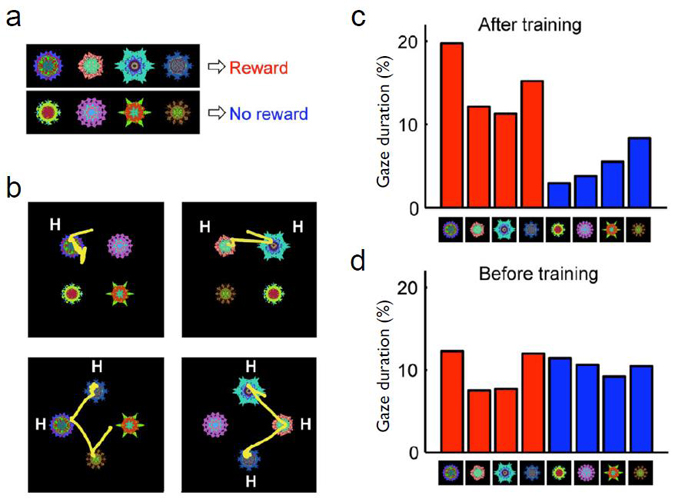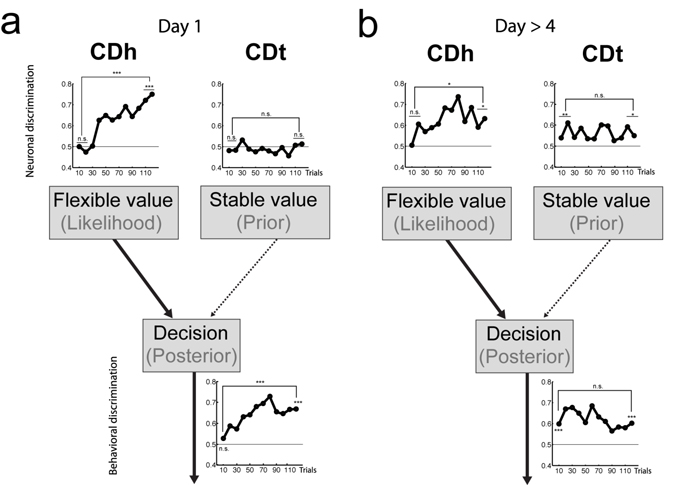
Full text loading...
The basal ganglia are equipped with inhibitory and disinhibitory mechanisms that enable a subject to choose valuable objects and actions. Notably, a value can be determined flexibly by recent experience or stably by prolonged experience. Recent studies have revealed that the head and tail of the caudate nucleus selectively and differentially process flexible and stable values of visual objects. These signals are sent to the superior colliculus through different parts of the substantia nigra so that the animal looks preferentially at high-valued objects, but in different manners. Thus, relying on short-term value memories, the caudate head circuit allows the subject's gaze to move expectantly to recently valued objects. Relying on long-term value memories, the caudate tail circuit allows the subject's gaze to move automatically to previously valued objects. The basal ganglia also contain an equivalent parallel mechanism for action values. Such flexible–stable parallel mechanisms for object and action values create a highly adaptable system for decision making.

Article metrics loading...

Full text loading...
Literature Cited


Data & Media loading...
Supplemental Material
Supplemental Figure 1. Object skill expressed as automatic gaze bias. (a) Procedure for learning stable values of visual objects. Half of the objects were associated with a reward (high-valued objects) and the other associated with no (or a small) reward (low-valued objects). (b) Free viewing procedure for testing the value-based gaze bias. On each trial, 4 fractal objects were chosen pseudo-randomly from a set of 8 learned objects (a), were presented simultaneously, and the monkey freely looked at them, but no reward was delivered. Yellow lines indicate saccade trajectories. The monkey tended to look at high-valued objects (denoted as 'H'). (c, d) The percentage of the gaze duration on each object before (d) and after (c) the long-term learning. Red and blue indicate high- and low-valued objects respectively. Supplemental Figure 2. Changes in the neuronal and behavioral responses during the combination of short-term and long-term learning of object values. The monkey performed the object value learning task in two stages of long-term learning: initial stage where novel objects were used as the saccade target (a, Day 1), and late stage where objects had been learned more than 4 times (b, Day > 4). Compared for each stage are: CDt neuronal discrimination, CDh neuronal discrimination, and behavioral discrimination based on the target acquisition time. Each graph shows the across-trial changes in the neuronal or behavioral discrimination within a learning session, computed as an ROC area. The statistical significance of the discrimination was tested for the early and late trials during the learning in two ways: 1) comparison with the neutral value (ROC 0.5), and 2) comparison between the early and late trials. * p<0.05, ** p<0.01, *** p<0.001, n.s. non-significant. Download Supplemental Figures 1 and 2 as a single PDF.

